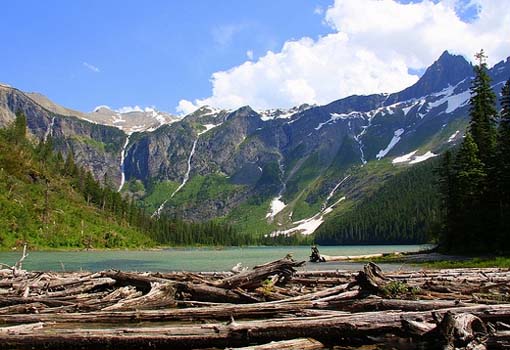


Great Basin National Park is in eastern Nevada near the Utah border. It's in the Great Basin Desert and contains most of the South Snake mountains. In the north, the mountain-hugging Wheeler Peak Scenic Drive leads to towering Wheeler Peak. Nearby is one of several ancient bristlecone pine groves. The marble Lehman Caves have distinctive stalactites and other formations. Park wildlife includes bighorn sheep.
Located just off what’s often been called “the loneliest road in America”, Great Basin National Park is the epitome of remote. Named for the dry and mountainous basin between the Sierra Nevada and Wasatch mountain ranges, this Eastern Nevada national park offers a diverse landscape, from subterranean caverns to high alpine peaks. And as one of America’s least visited national parks, it’s the perfect place to take a welcome break from hectic city life. The good news is, even though parts of this park are quite rugged, it still offers plenty of places for wheelchair-users and slow walkers to admire Mother Nature’s handiwork.
From the 13,063-foot summit of Wheeler Peak, to the sage-covered foothills, Great Basin National Park is a place to sample the stunning diversity of the larger Great Basin region. Come and partake of the solitude of the wilderness, walk among ancient bristlecone pines, bask in the darkest of night skies, and explore mysterious subterranean passages.
Get Your Bearings
One of the most accessible ways to enjoy Great Basin National Park is to take the 12-mile scenic drive up to Wheeler Peak. The best place to begin your adventure is at the Great Basin Visitor Center, located on Highway 487 in Baker. There’s accessible parking in front, with level access to the visitor center. Inside there’s plenty of room to navigate a wheelchair around the interpretive exhibits. This is a good place to get your bearings, pick up a park map and get first-hand information from the rangers on duty.
From the visitor center, continue along Highway 488 until you reach the park. Just past the park entrance, make a right turn on Wheeler Peak Scenic Drive. This winding road hugs the mountain as it passes through several ecosystems on the way to the summit. The landscape is dotted with sagebrush, before it gives way to a pinion juniper woodland, and then transforms into a conifer forest. There’s no shortage of great windshield views along the way, and there are several scenic viewpoints where you can admire the sweeping vistas. And although the road is paved, the average grade is eight percent, and vehicles and trailers longer than 24 feet are prohibited. On the plus side, that means you won’t see any tour buses at the top.
Enjoy the View
There are several scenic viewpoints along Wheeler Peak Scenic Drive, that are definitely worth a stop. At the top of the list is the Osceola Ditch wayside exhibit, which is located just past Lehman Creek campgrounds. There’s plenty of room to parallel park in the asphalt pullout, with level access over to the interpretive panel about the Osceola Ditch. This 18-mile flume dates back to 1890, when it was built to carry water to the nearby gold mining operation. Although the mines saw some success in the beginning, they shut down in 1905, but some remnants of the Osceola Ditch still stand.
Just up the road you’ll find two viewpoints which offer great views of the vast Great Basin. Mather Overlook is just a short drive off the main road, and it features level access to the viewing deck, which has a wheelchair-height scope. There is also an accessible pit toilet and a picnic table on a cement pad at this overlook. Wheeler Peak Overlook also offers level access to a viewing deck with a wheelchair-height scope, where you’ll get an excellent view of the Wheeler Peak Glacier.
Up at the top there is accessible parking in the Bristlecone Parking Lot, with level access to the Island Forest Trail. This .4-mile loop is very nicely done, with rubber mats and boardwalk sections to make it accessible in all weather. The maximum grade along the 32-inch wide trail is eight percent, and there are benches along the way to stop and rest. Interpretive plaques dot the trail, which winds through a fir and pine forest.. Located at 10,000 feet this trail offers a unique opportunity for wheelchair-users and slow walkers to explore the sub-alpine forest.

